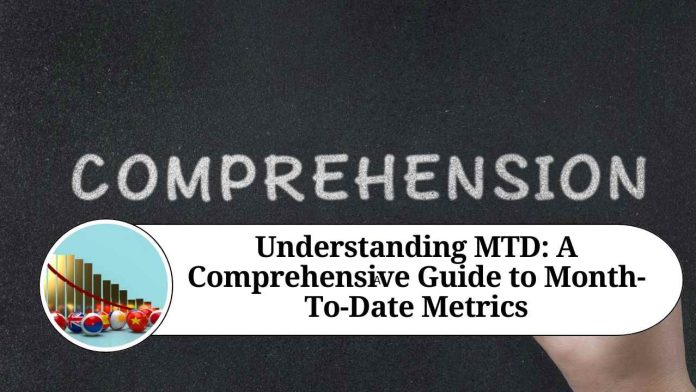MTD is calculated by summing up the variable of interest (such as revenue or expenses) from the beginning of the month until the current date. For example, if a company has made $10,000 in revenue from the beginning of the month until the 15th day of the month, then the MTD revenue for that period would be $10,000. MTD can be calculated for any variable that is tracked over time, such as sales, expenses, profits, or even website traffic.
MTD is useful because it provides a more up-to-date snapshot of performance than other time periods, such as year-to-date (YTD) or quarter-to-date (QTD). YTD and QTD metrics provide a broader perspective on performance, but they may not reflect recent changes in the business that have occurred within the current month. MTD provides a more granular view of performance, which can be especially useful for businesses that experience fluctuations in performance over shorter time periods.
MTD is commonly used in financial reporting and analysis, where it is used to track revenue, expenses, profits, and other financial metrics. MTD can be used to compare performance across different periods, such as the current month versus the same month in the previous year. This can help businesses identify trends and patterns in their performance, which can inform strategic decisions.
Overall, MTD is a useful financial metric for businesses and organizations to track. By providing an up-to-date snapshot of performance for the current month, MTD can be used to inform important financial decisions and help businesses stay on top of their performance over shorter time periods.
MTD is also a useful metric for managers and executives who need to track the performance of their teams or departments. For example, a sales manager might use MTD to track the sales performance of their team for the current month, while an operations manager might use MTD to track production volumes for their department.
MTD can be calculated using a variety of tools, including spreadsheet software like Microsoft Excel or Google Sheets, as well as more advanced analytics tools like Tableau or Power BI. These tools allow businesses to visualize MTD data in a variety of ways, including charts, graphs, and tables.
One variation of MTD is the MTD % change, which calculates the percentage change in performance from the beginning of the current month to the current date. This metric is useful for tracking changes in performance over time, and can help businesses identify areas where performance has improved or declined.
MTD is also sometimes used in conjunction with other financial metrics, such as year-over-year (YOY) or quarter-over-quarter (QOQ) comparisons. For example, a business might track MTD revenue for the current month, and compare it to the same month in the previous year to see if there has been any growth or decline in revenue over time.
Conclusion
MTD is a widely used financial metric that provides an up-to-date snapshot of performance for a given time period. By tracking MTD, businesses can make informed financial decisions, identify trends and patterns in their performance, and stay on top of their performance over shorter time periods. MTD is a versatile metric that can be used in a variety of industries and contexts, and is an essential tool for any business looking to stay competitive in today’s fast-paced business environment.
Other Related Blogs: Section 144B Income Tax Act
Frequently Asked Questions (FAQs)
Q: What is MTD?
A: MTD stands for Month-To-Date. It is a financial metric that represents the cumulative sum of a particular variable, such as revenue or expenses, for the current month. MTD is calculated from the beginning of the month until the current date, providing an up-to-date snapshot of the current month’s performance.
Q: Why is MTD important?
A: MTD is important because it provides a more up-to-date snapshot of performance than other time periods, such as year-to-date or quarter-to-date. It can be used to track revenue, expenses, profits, and other financial metrics, and can help businesses identify trends and patterns in their performance over shorter time periods.
Q: How is MTD calculated?
A: MTD is calculated by summing up the variable of interest (such as revenue or expenses) from the beginning of the month until the current date. For example, if a company has made $10,000 in revenue from the beginning of the month until the 15th day of the month, then the MTD revenue for that period would be $10,000.
Q: What is MTD % change?
A: MTD % change is a variation of MTD that calculates the percentage change in performance from the beginning of the current month to the current date. This metric is useful for tracking changes in performance over time, and can help businesses identify areas where performance has improved or declined.
Q: How can MTD be used in business decision-making?
A: MTD can be used in business decision-making by providing an up-to-date snapshot of performance for the current month. This information can be used to inform important financial decisions and help businesses stay on top of their performance over shorter time periods. MTD can also be used to compare performance across different periods, such as the current month versus the same month in the previous year




















